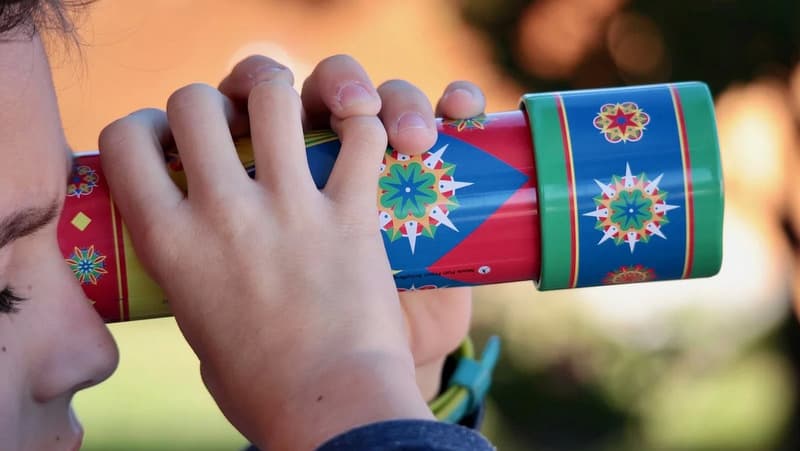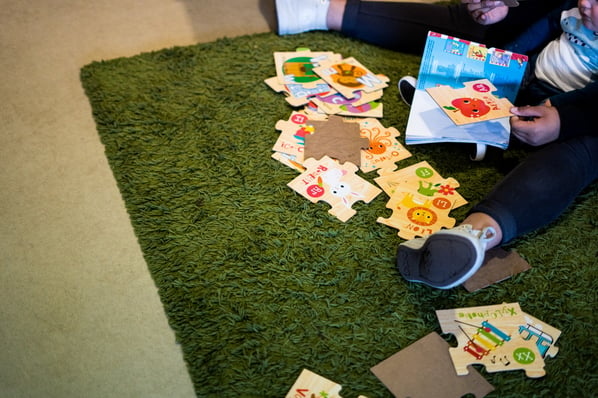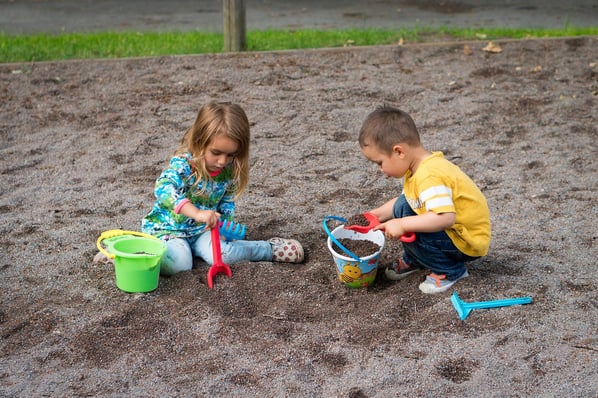
It's a fact that children who have supportive and rich early education experiences enjoy lifelong benefits. This benefit of preschool is supported by a daily preschool schedule that considers children's developmental needs, from proper nutrition to motor skills development.
A day at preschool is all about balance: quiet time and play, flexibility and routine, and structured lessons and free choice. While finding the formula that works for you and your class may take a while, the basic elements of a daily preschool schedule will remain the same.
This article will cover the components of an effective preschool schedule and give ideas on managing day-to-day preschool activities. If you're looking for preschool daily schedule templates, head to the bottom of the article, where you'll find sample full-day and half-day schedules.
How to create a structured preschool schedule
A detailed, structured preschool schedule will help you, your staff, and the children in your program have productive, enriching days. Carefully plan your activities and breaks to help foster the children’s development and growth. With brightwheel's scheduling feature, you can save hours every week and streamline your scheduling process with custom templates, flexible calendars, and easy ratio tracking.
Establish preschool schedule basics
The main objective of a daily preschool schedule is to structure the best environment for early childhood development. Since preschoolers can't self-regulate the same way older children can, your careful planning enables their growth. A positive preschool experience is essential to optimal early childhood development, and this growth plays out daily according to how well teachers plan and engage with children.
No matter how you choose to schedule your time, the activities you engage in each day, or what resources your center has, a daily schedule will include the following:
- Routine: Children perform best when they have a regular schedule and know what to expect.
- Play: Children grow and explore through play, and every preschool can build playtime into the schedule.
- Regular meals and snacks: Preschool days require lots of energy, and children need to fuel their bodies appropriately with nutritious snacks and meals.
- Quiet time: Adults often wish nap time was still a part of their daily schedule, and for good reason: nap time (or quiet time) helps children recharge so their brains can absorb what they've learned.
- Physical activity: Regular time and space to move around outside is widely regarded as a staple for any preschool schedule and is essential for developing motor skills.

Incorporating all these elements into your daily schedule is necessary for promoting early childhood development and is often regulated by law. Check your state’s regulations to see their requirements and ensure that your plans align with early learning standards.
For example, South Carolina requires outdoor activity for children daily as weather permits, and Florida requires that snacks and meals meet USDA MyPlate guidelines. There may also be different required staff ratios for active time and nap or quiet time, which should factor into your preschool's daily schedule and how you handle staff breaks.
Use flexibility to your advantage
Flexibility is an important part of your daily schedule. Early on, let your timetable be flexible as all of your children settle into a new schedule. Preschool is a time for growth and exploration that will manifest differently for each child, so you may face different challenges from one class to the next.
For example, one group of children might experience a relatively smooth drop-off, while another may need more time to prepare for the day. Maybe your last group was hungry long before snack time, and your next group isn't hungry during snack time at all. There's no way to know this ahead of time, but flexibility during the first weeks of school can curb staff frustrations about moving through planned daily activities.
The secret to a flexible preschool schedule is patience—and not just being calm if you run behind or have to adjust your day's flow. It's also about being patient with the children in your care. Starting preschool is a big adjustment; it takes time for children to trust their teachers and feel comfortable sleeping at nap time, eating new foods, listening to instructions, or socializing. Your patience and willingness to spend a few extra minutes to smooth things over is a major signal to children that you are trustworthy and on their side.
Another way to build malleability into your daily routine is to implement guided choice time, especially if you have a group of mixed ages and abilities. This will ensure that children are exploring and have “independent” time to socialize, take a break, or try something new at their own pace.
Manage transitions
Moving from one task to another as a group can be challenging for preschoolers. Managing your schedule's flow keeps your day and the children in your care on track. Approaching transitions with a firm, gentle hand will help you usher your class along more easily.
One key element of managing transitions comes before you even start your day. Post a visual schedule where everyone can see it. It's easy to make a child-friendly daily schedule using laminated paper or a whiteboard—no need to get fancy. As long as children know where to see the order of activities, the posted schedule is doing its job.
When it comes to transition times, use an audio or visual cue to signal the start of wrapping up. This could be a bell, a rhyme, a song, or anything else that works for your class. You can include children by making this a rotating classroom helper role, which will also instill a sense of the daily rhythm as each child assumes the role of “transition conductor.”
Use positive reinforcement and clear expectations to help your group transition smoothly. Set up rules around transition times, such as, "Everyone does their share to clean up," and praise children following your classroom code each day.
Another good way to smooth transitions is to provide quiet options for those who finish their tasks early (e.g., finish lunch early or wake up from a nap early). Picture books, puzzles, pencil drawings, or making pipe cleaner shapes are quiet, solo activities that are easily set up. These help children occupy themselves, so you don't have to rush anyone and ensure that the whole group moves on from one thing to another together.
Preschool daily schedule example
- 7:00am—8:30am: Welcome / Free play
- 8:30am—9:00am: Breakfast
- 9:00am—9:30am: Clean up
- 9:30am—10:30am: Circle time
- 10:30am—12:00pm: Learning centers
- 12:00pm—1:00pm: Lunch
- 1:00pm—1:30pm: Clean up
- 1:30pm—2:30pm: Nap time
- 2:30pm—3:00pm: Storytime
- 3:00pm—4:00pm: Outdoor play
- 4:00pm—4:30pm: Snack time
- 4:30pm—5:00pm: Clean up / Free play
- 5:00pm: Close
Preschool half-day schedule example
- 7:00am—7:30am: Welcome / Free play
- 7:30am—8:30am: Breakfast
- 8:30am—9:00am: Clean up
- 9:00am—9:30am: Circle time
- 9:30am—10:30am: Learning centers
- 10:30am—11:30am: Nap time
- 11:30am—12:00pm: Lunch
- 12:00pm: Close
Preschool visual schedule
According to the National Center for Pyramid Model Innovations at the University of South Florida, visual schedules can prevent challenging behavior and help children learn to follow routines. Visual schedules pair pictures with each activity, so children can easily associate scheduled events with familiar objects. For example, children can associate an image of a bowl of cereal with breakfast time.
Visual schedules can also help young children understand the order of scheduled events. If an image of a swing follows the picture of a bowl of cereal, children can make the connection that time on the playground comes after breakfast. When children understand the order of activities, it can be easier for teachers to transition them from one activity to the next.
How to create a visual schedule
- Take pictures of items in your childcare center that correspond with your scheduled activities
- Print the photos
- Arrange the photos to fit the order of your scheduled events
- Write the name of each event on an index card and attach it to the photo of the event
- Display the schedule in your classroom
Plan the best you can
The “perfect” preschool daily schedule doesn't exist. It depends on what works for you, your preschool set-up, and your children. However, the framework of a good preschool schedule is made with building blocks that are tried and true, and classroom management can be all the difference in making a schedule work.
The routine you build with your preschoolers isn't just what order you do activities in; it is also about behavioral expectations and how you can set up your day to support each child. Your daily preschool schedule lays the groundwork for all the learning and development that occurs each day, so getting it right is essential for a functioning classroom.
Brightwheel is the complete solution for early education providers, enabling you to streamline your center’s operations and build a stand-out reputation. Brightwheel connects the most critical aspects of running your center—including sign in and out, parent communications, tuition billing, and licensing and compliance—in one easy-to-use tool, along with providing best-in-class customer support and coaching. Brightwheel is trusted by thousands of early education centers and millions of parents. Learn more at mybrightwheel.com.



